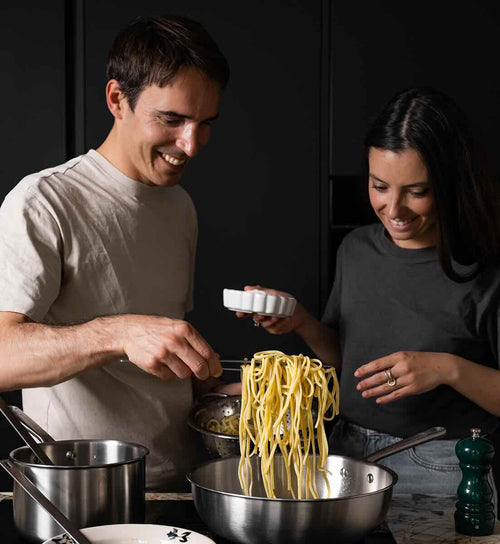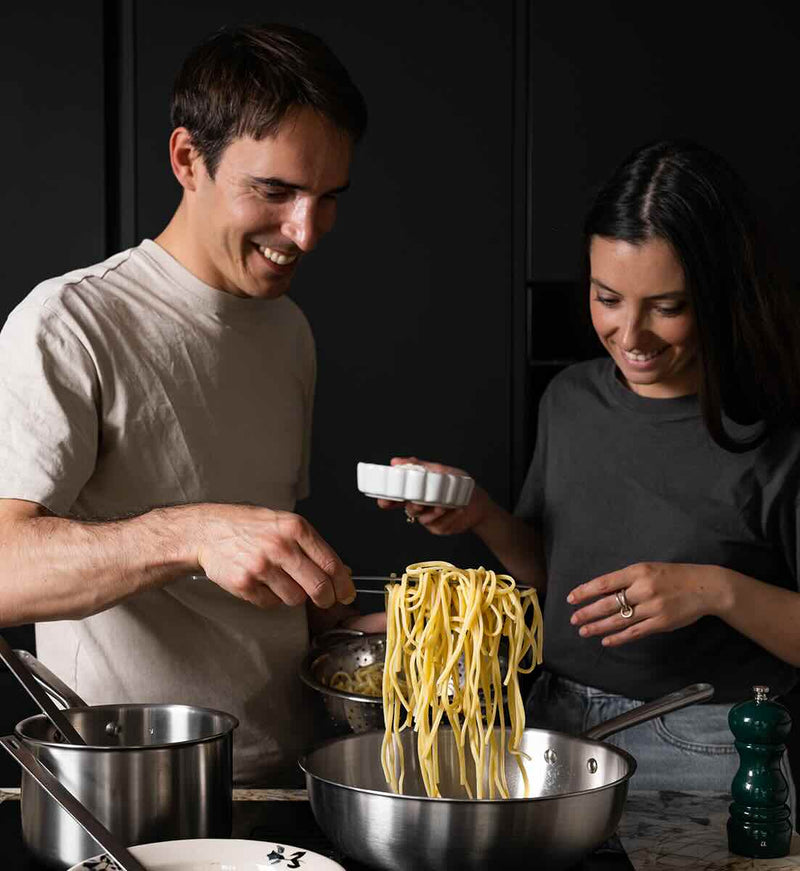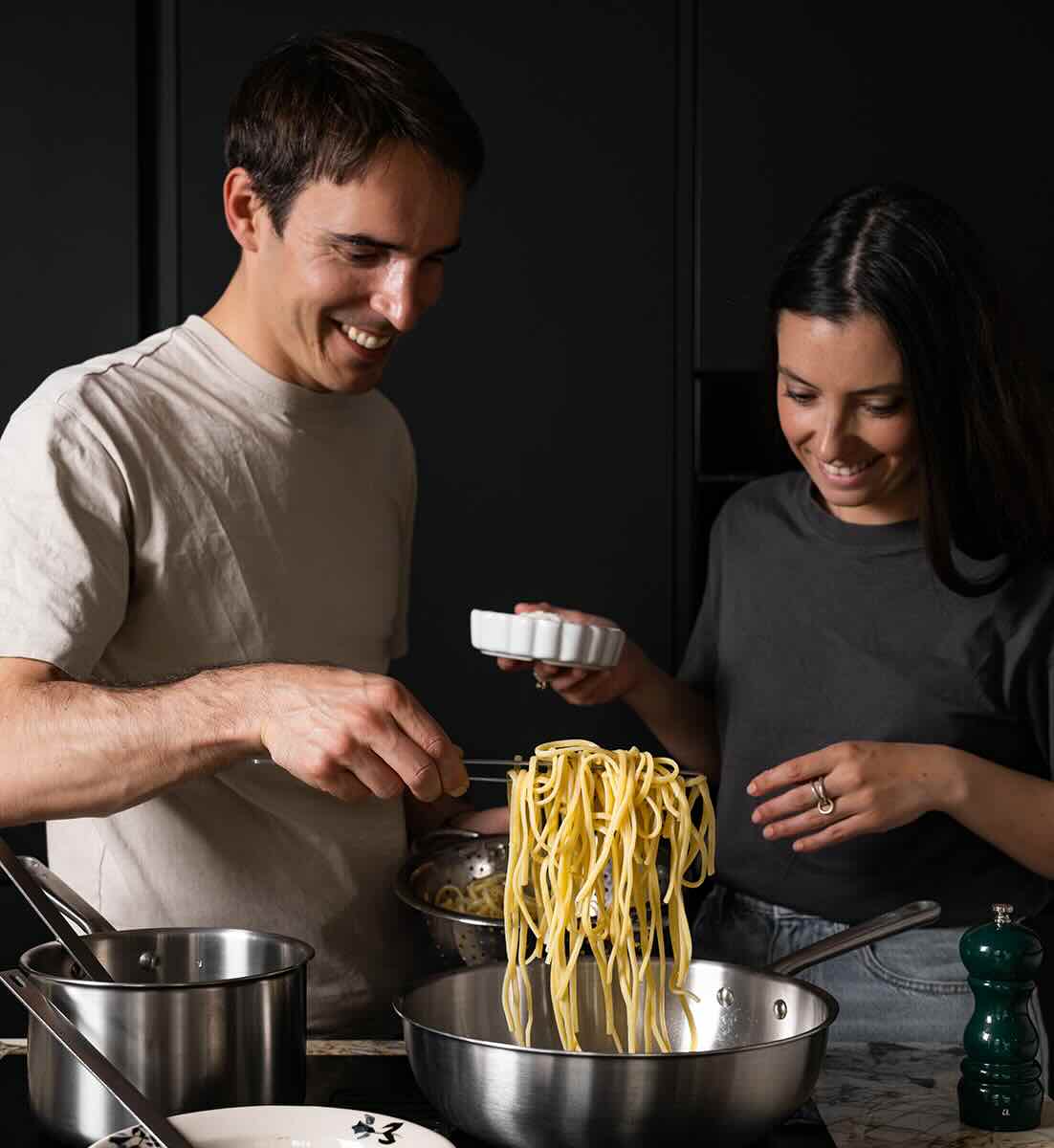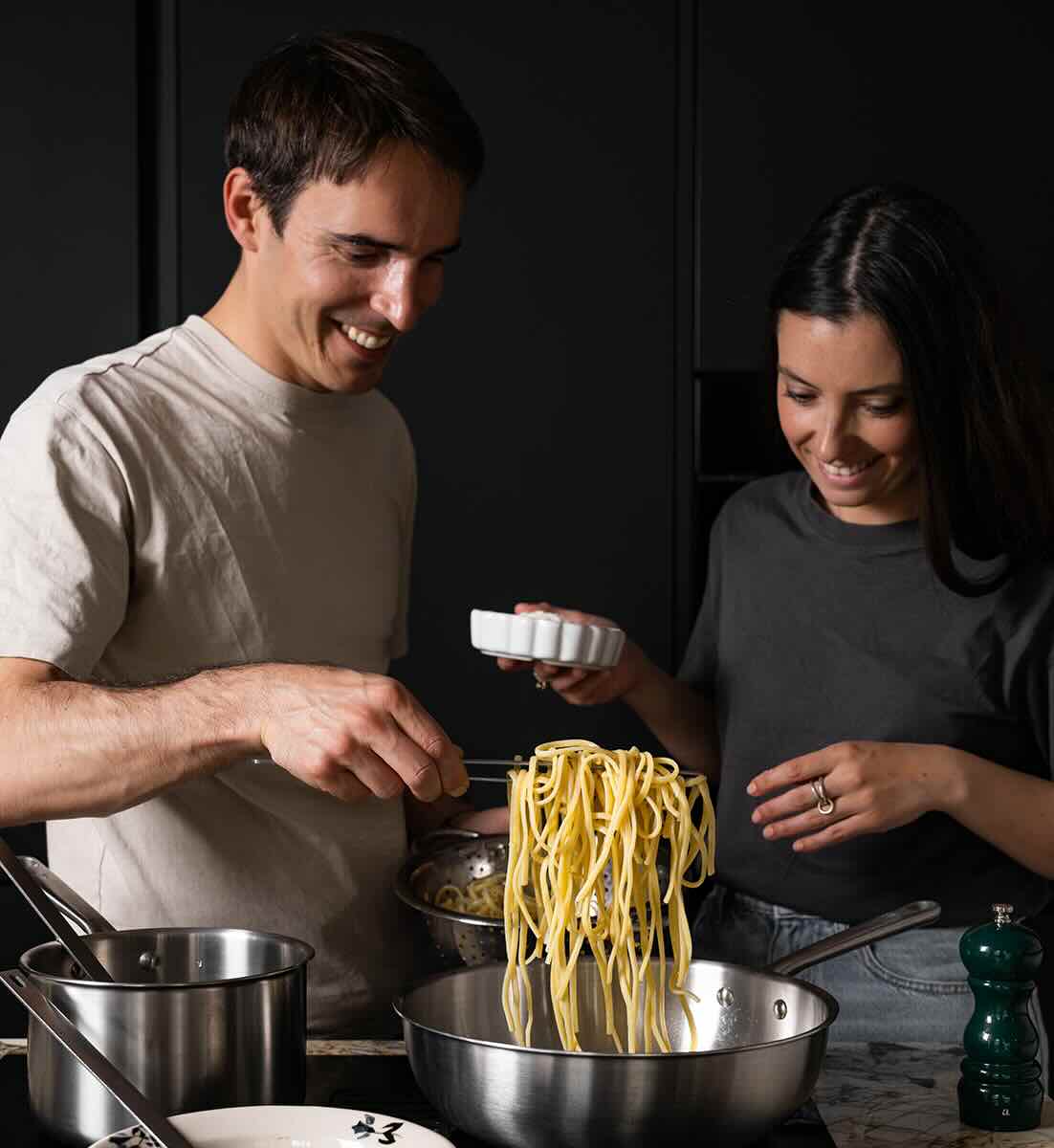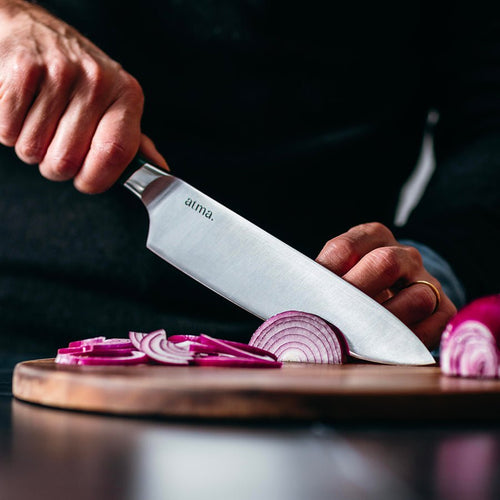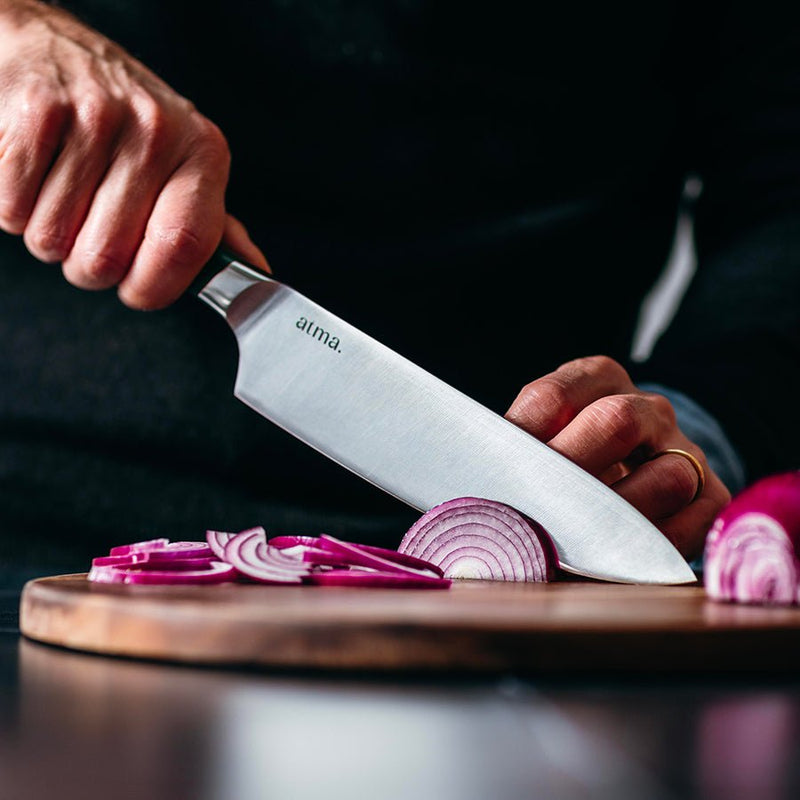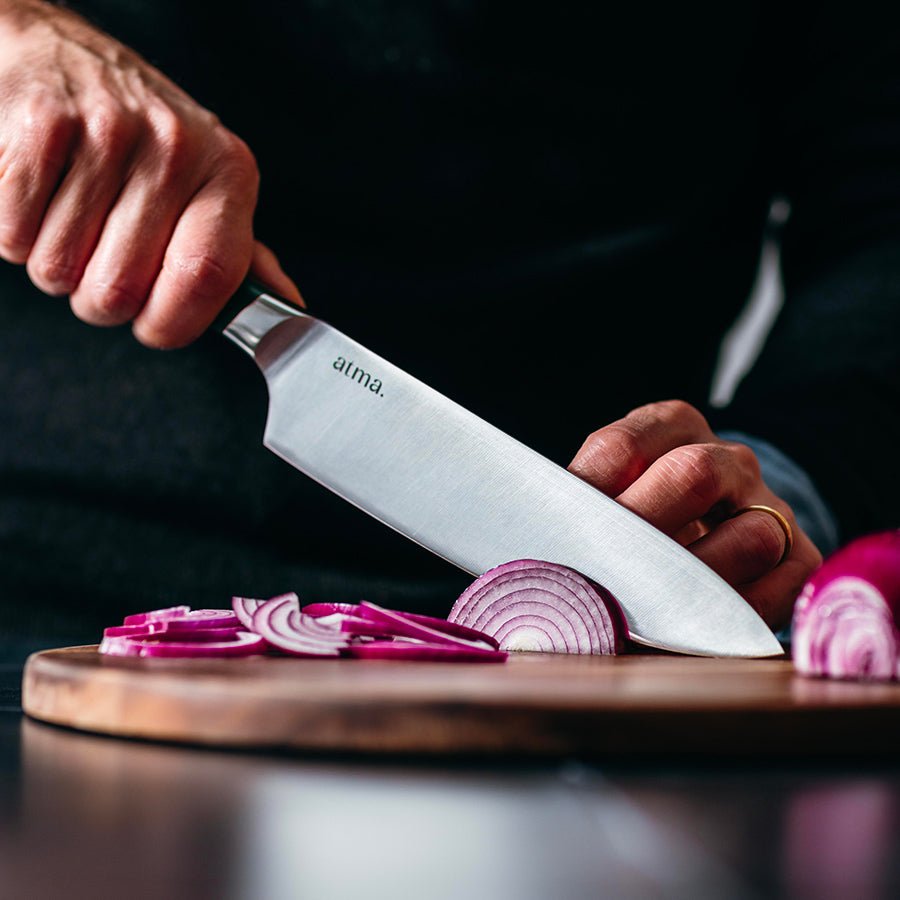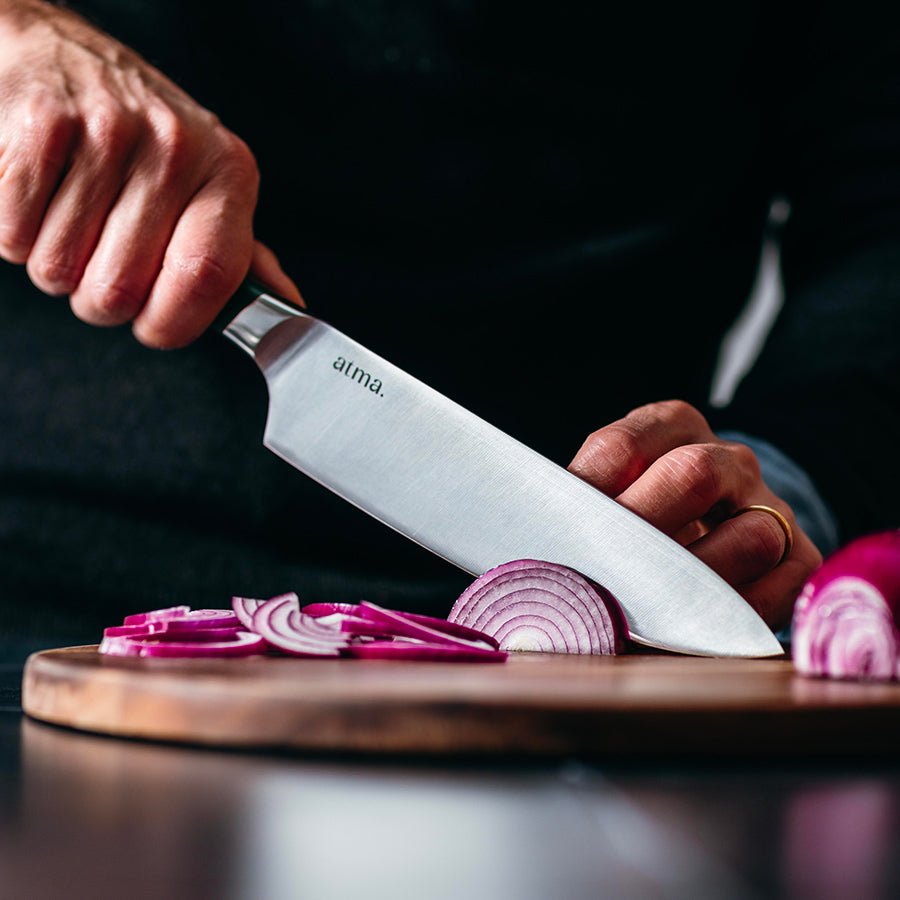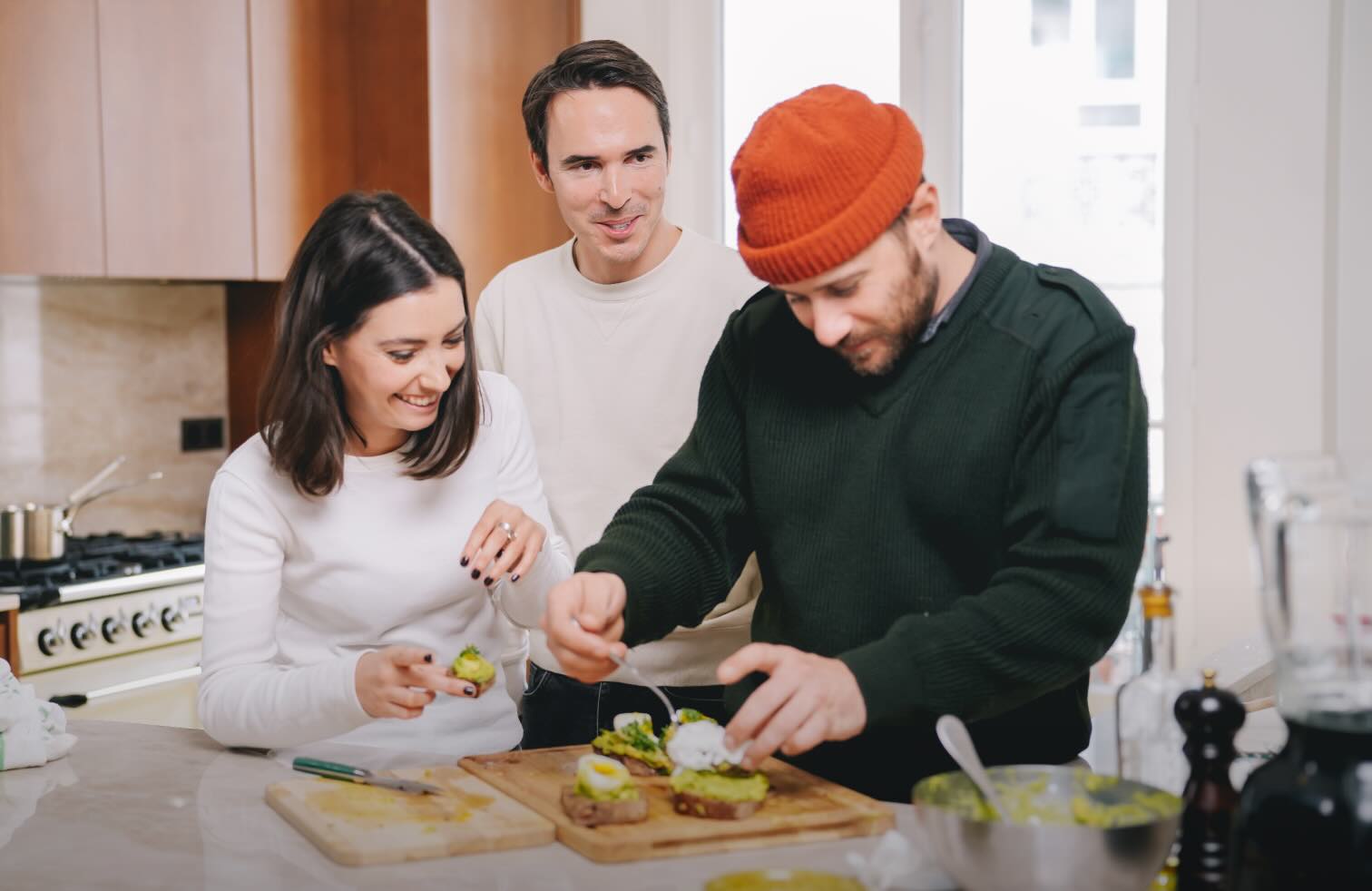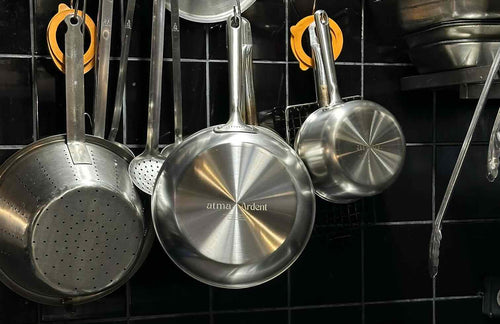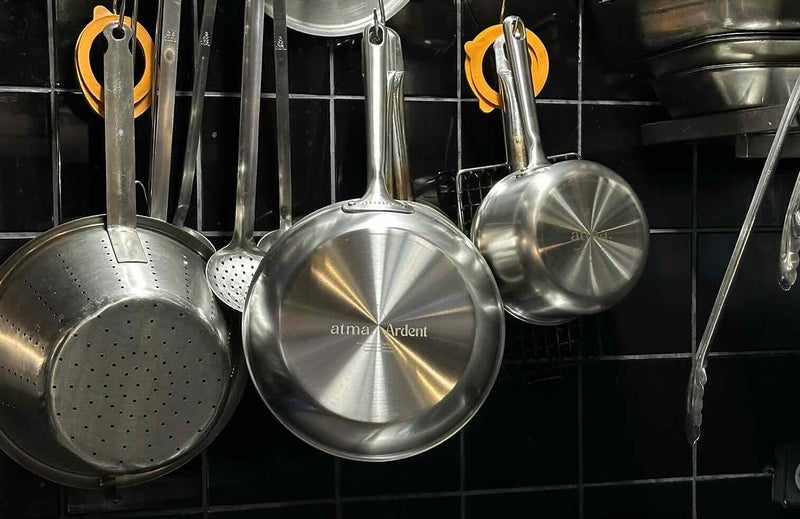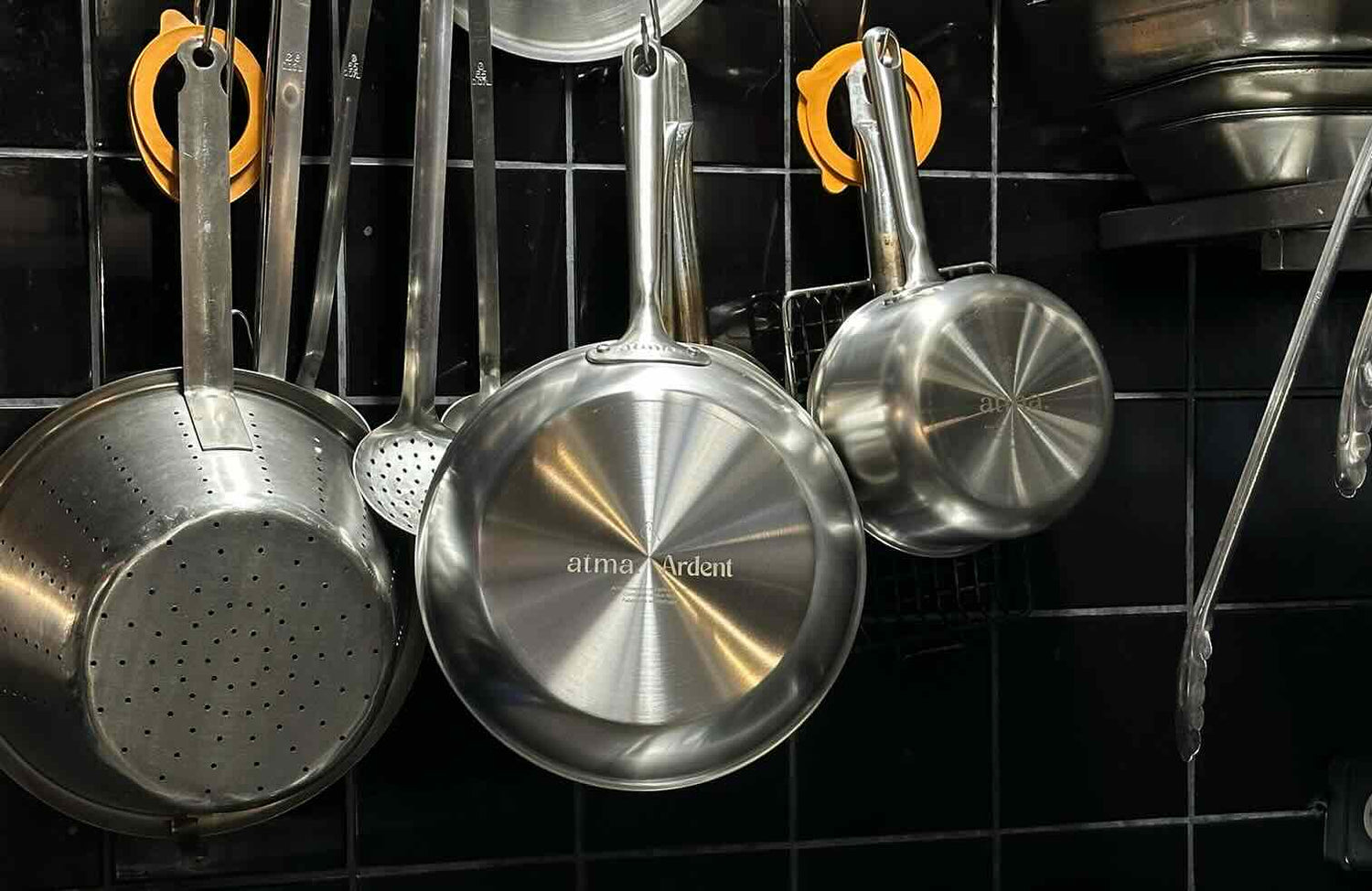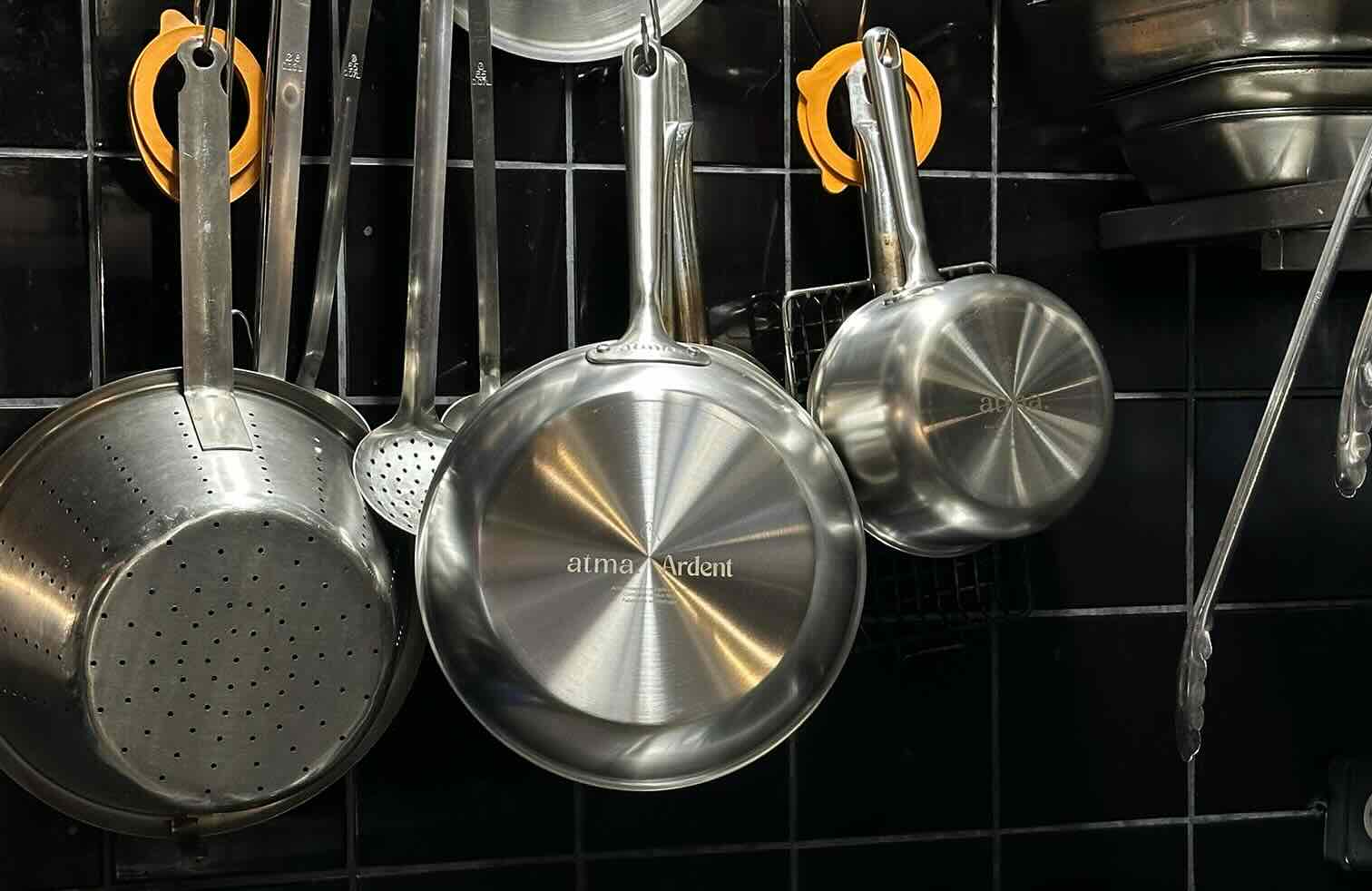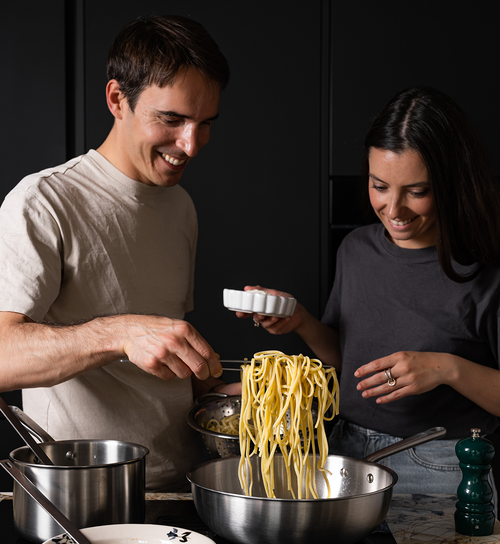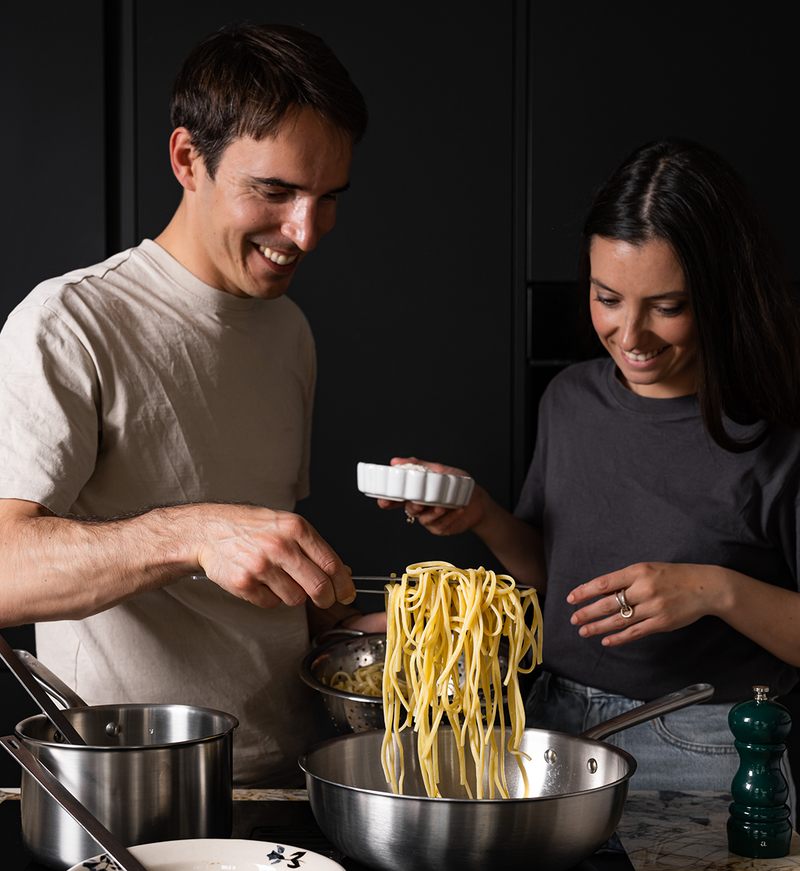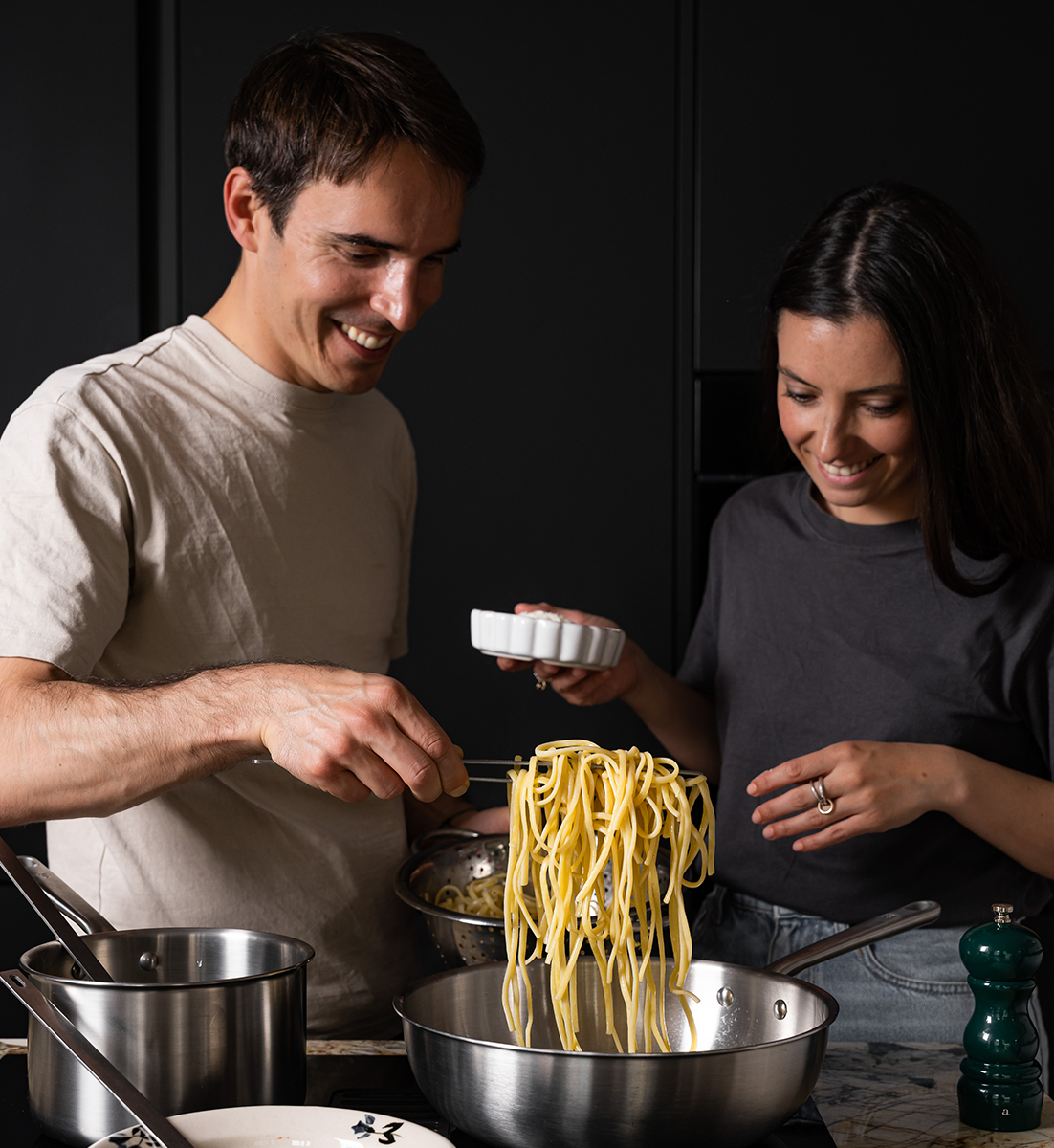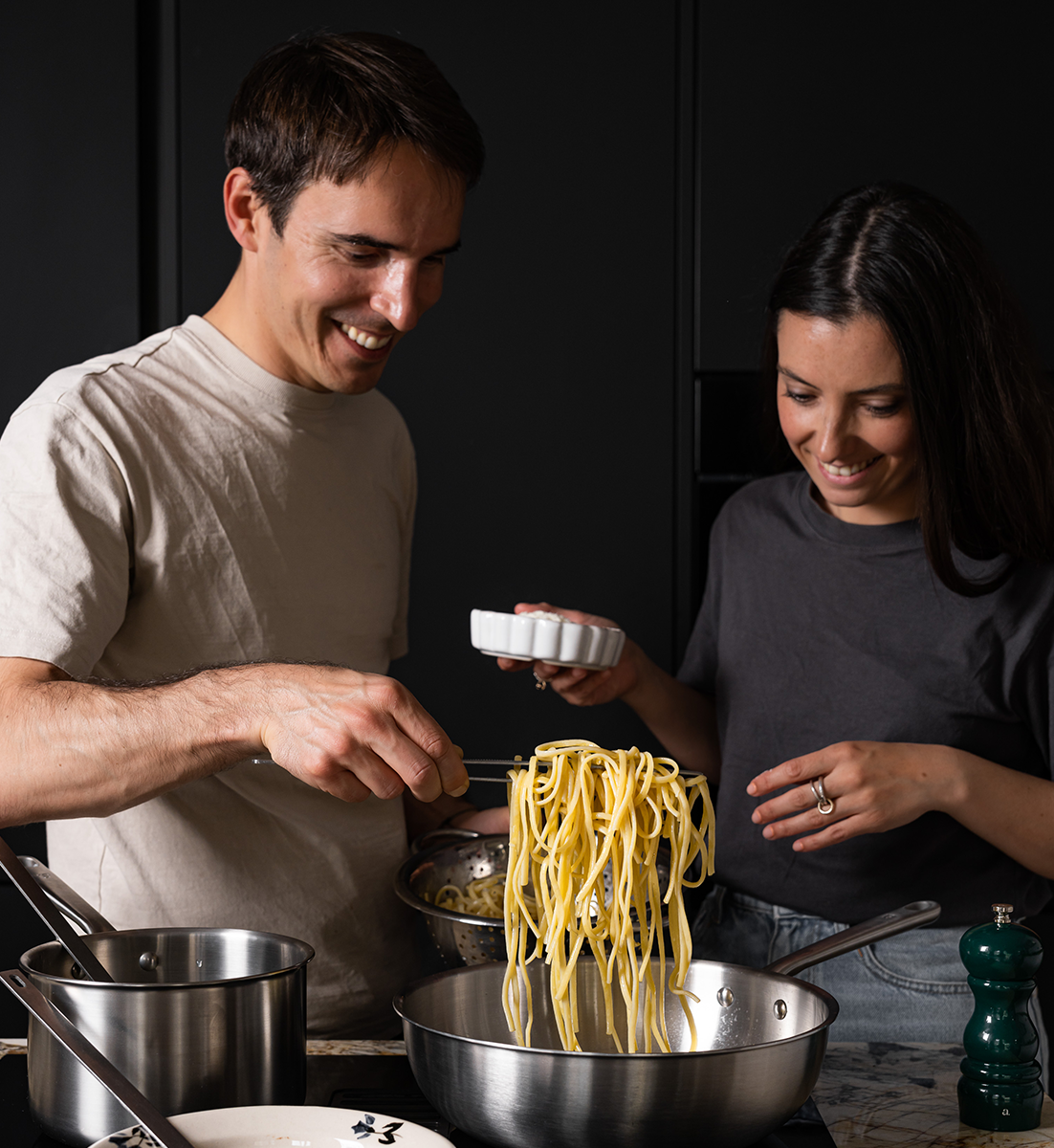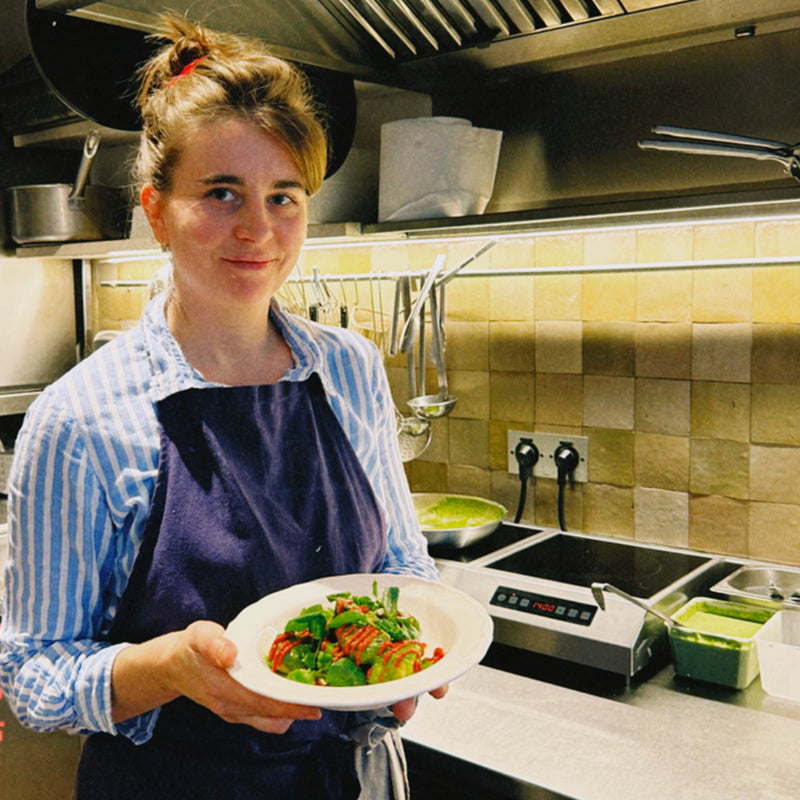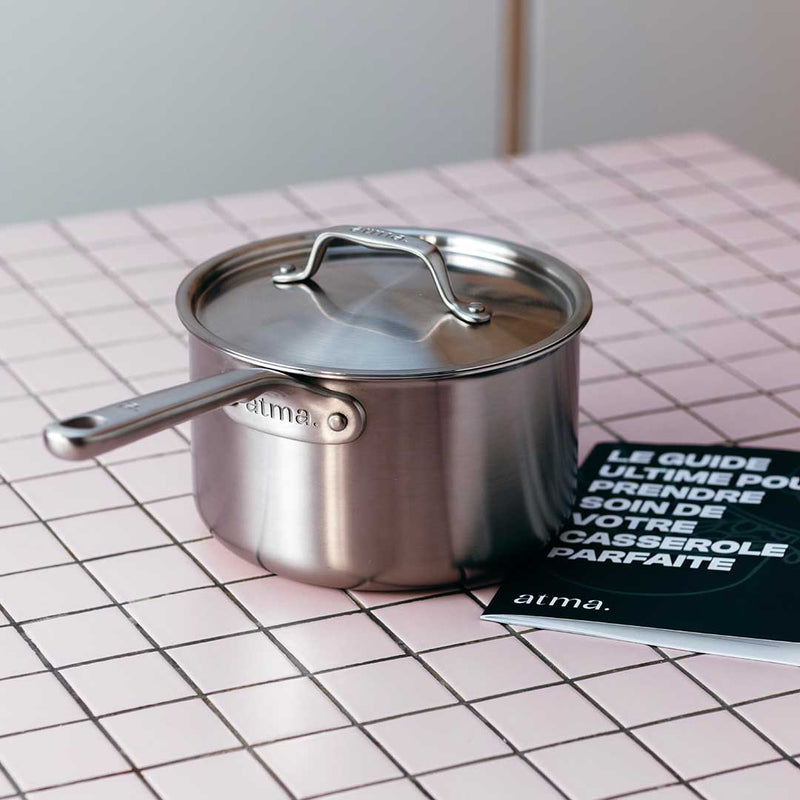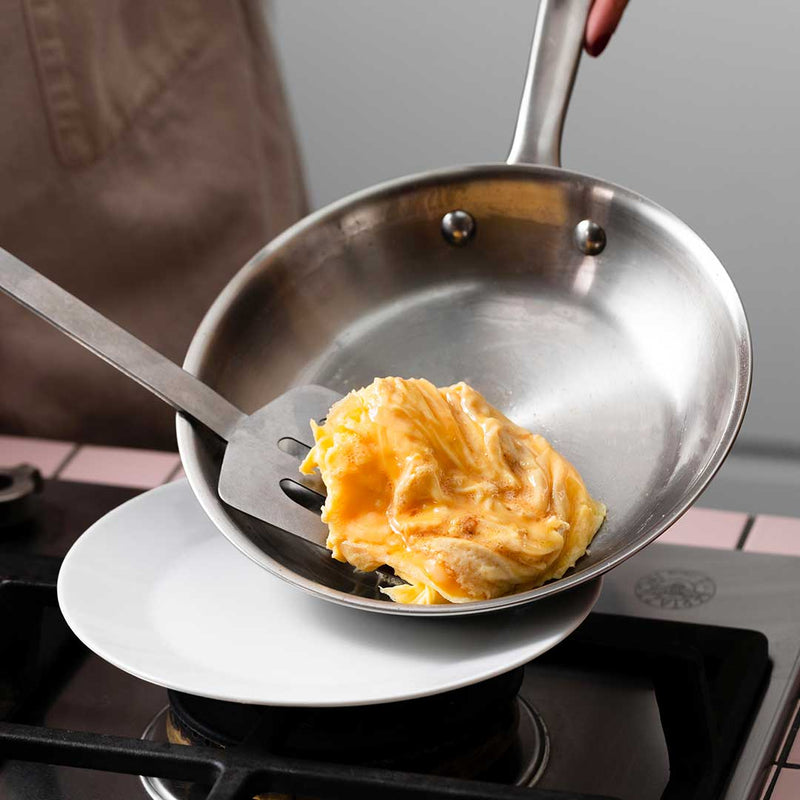Anatomie d'un couteau de cuisine
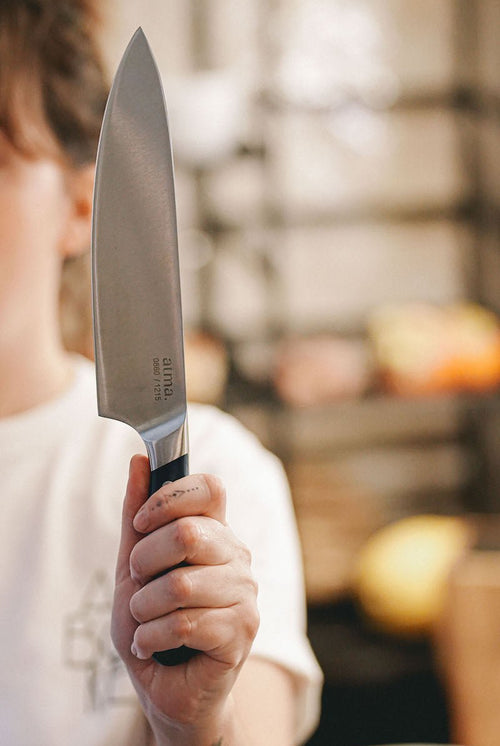
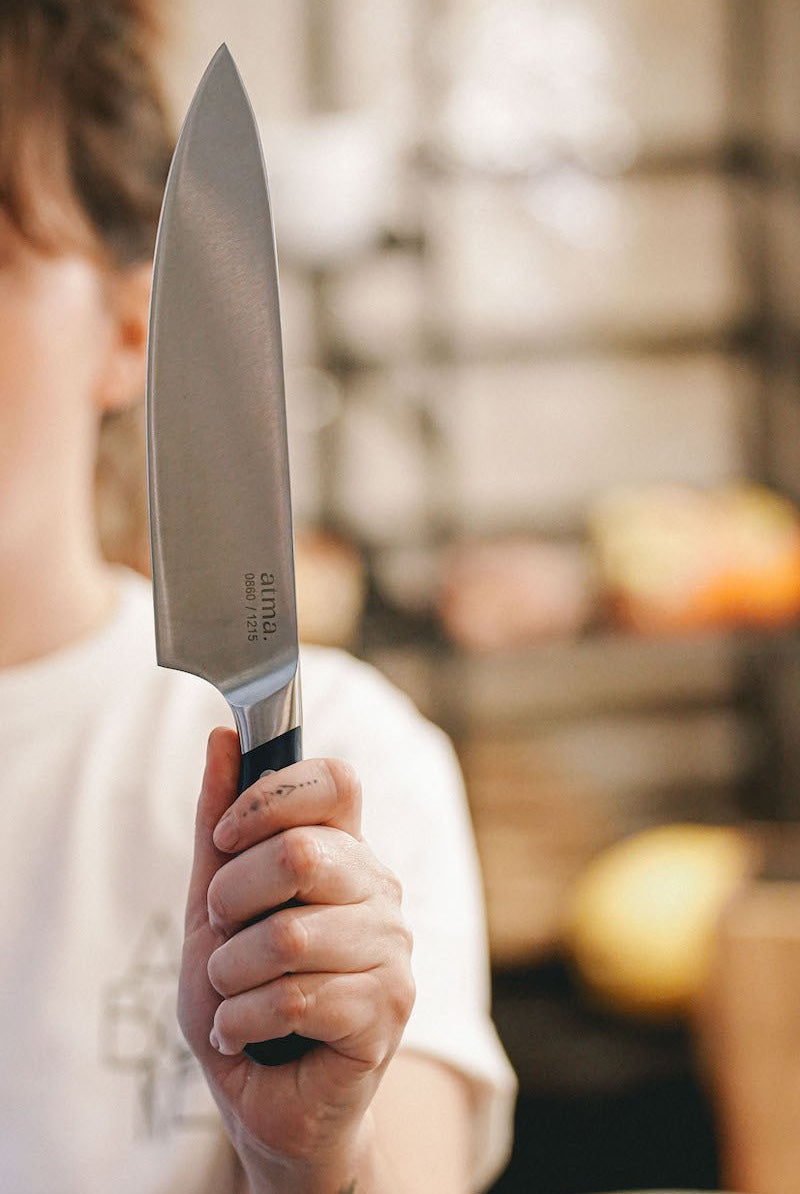
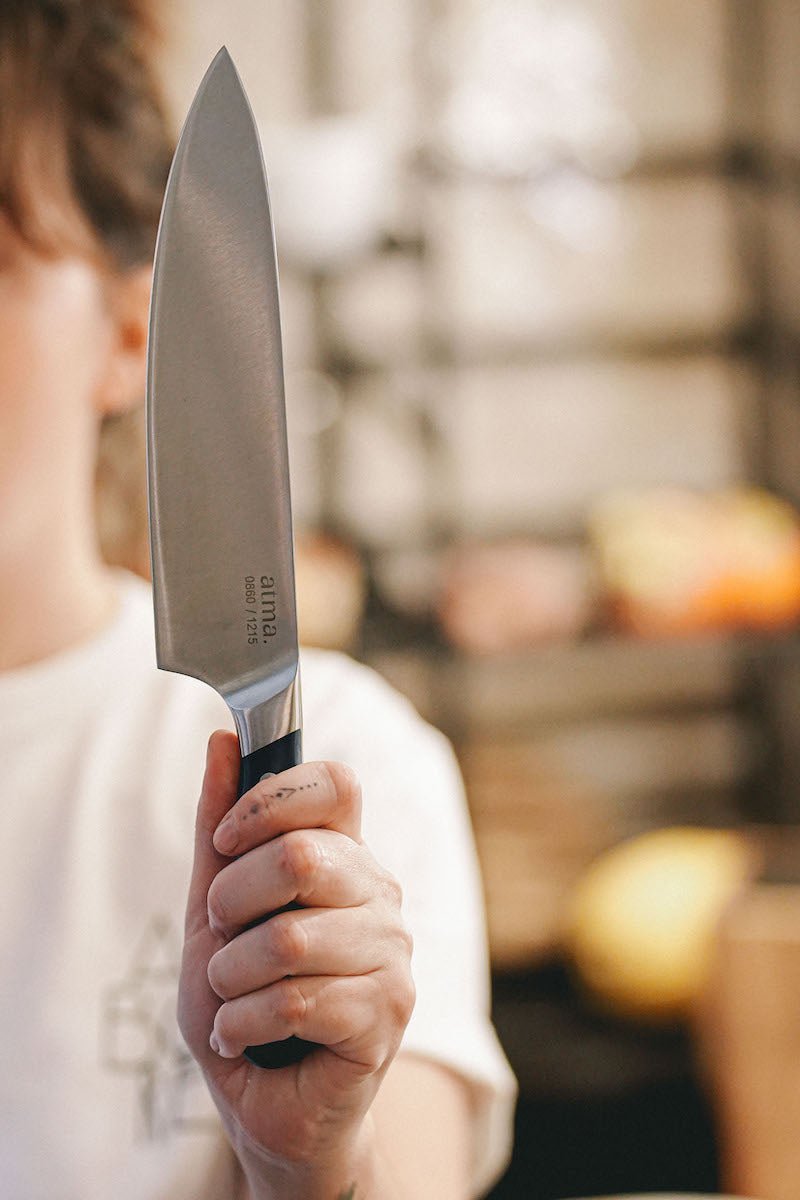
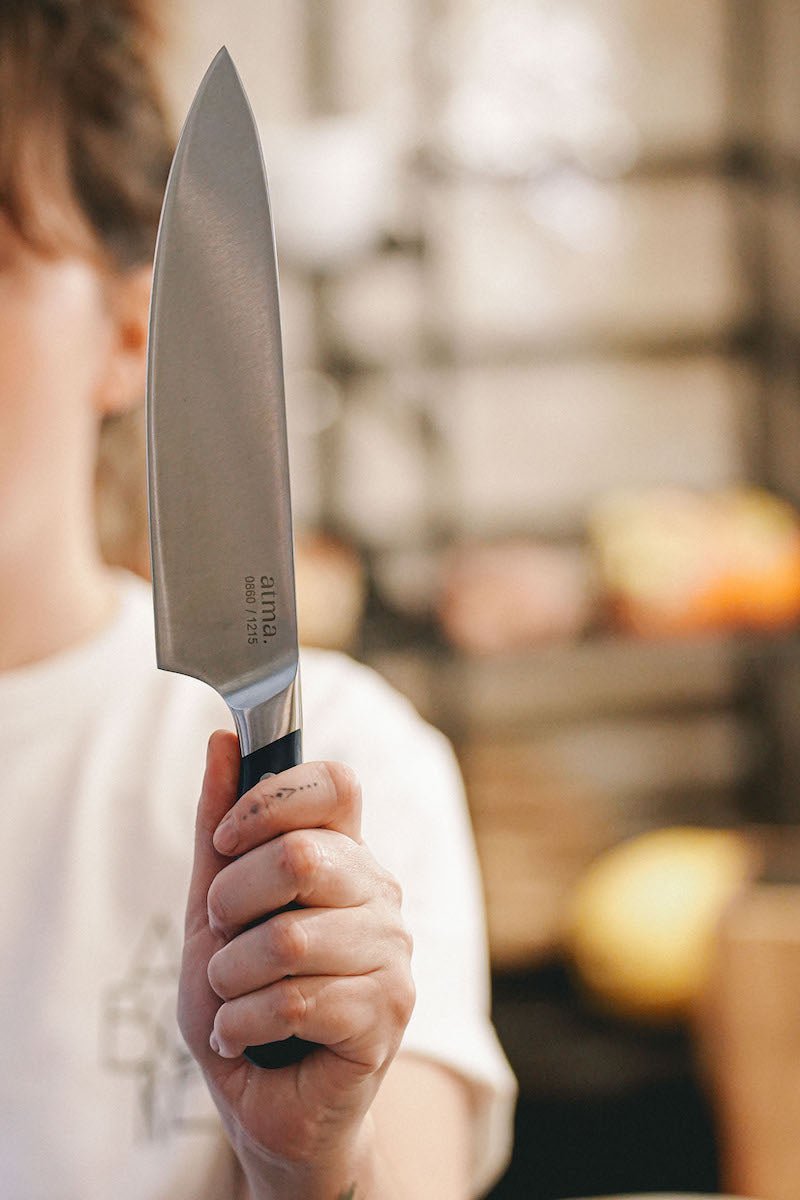




Avoir un bel équipement sans comprendre ce qui fait de lui un bon outil, c’est comme déguster une très belle bouteille de vin sans étiquette. C’est agréable, mais on passe à côté de cette extase qui fait la beauté du moment. C’est bien dommage.
Petit test avant de passer à la suite. Si on vous dit :
- Mitre ?
- Soie ?
- Talon ?
Et que vous nous répondez “Les Rois Mages” ou “Kamoulox”, prenez place sur le banc. Le cours d’anatomie d’un couteau de cuisine c'est maintenant.
Comme on sait que la simple prononciation du mot “cours” donne de l’urticaire à certains, on a fait un beau schéma récapitulatif pour le rang du fond :

La "tête" du couteau : la lame
Ne compliquons pas les choses, on va procéder de manière très simple : de la gauche vers la droite. On commence donc logiquement avec la tête du couteau qu’on appelle la lame.
Jusque-là, tout devrait aller puisque la lame est un élément que vous devriez connaître. Et vous savez même qu’elle peut être forgée ou découpée. On vous fera un article complet sur ce sujet pour vous expliquer la différence.
Éléments qui composent la lame
La lame d’un couteau se compose d’un certain nombre d’éléments tous plus importants les uns que les autres.
Pour commencer et toujours de droite à gauche, on peut évoquer la partie la plus connue : la pointe.
Pas de piège ici, il s’agit bien de l’extrémité de la lame. C’est la partie du couteau la moins susceptible de vous blesser, car elle est opposée à vous lorsque vous coupez. Bon, par contre si vous la dirigez vers une personne en face de vous, elle peut être très dangereuse. Pas besoin de vous faire un dessin, vous avez compris qu’il faut être précautionneux.
Cette partie est aussi très sensible et peut casser si on fait tomber son couteau. Il est donc nécessaire de faire attention lorsqu’on le range dans sa cuisine. On vous recommande d'ailleurs de l’équiper d’un étui pour éviter qu’il ne s’abîme.
Ensuite vient le tranchant ou le fil de la lame. C’est la partie coupante et affutée du couteau. Une partie qui doit, pour conserver toutes ses qualités de découpe, être entretenue régulièrement.
Puis si vous longez le tranchant ou le fil de la lame (de loin ! Ne posez pas votre doigt sur le tranchant, conseil d’amis), vous arrivez à ce qu’on appelle le talon. C’est l’angle de la lame lorsqu’elle remonte vers le manche.
Et justement, lorsque vous continuez votre chemin, cette partie qui remonte est appelée la garde. Cette partie n’est généralement pas trop aiguisée pour éviter de vous blesser si le manche vous glisse des mains en coupant un butternut par exemple.
Opposé au fil de la lame, on a le dos de la lame. Le nom de cette partie est assez évocateur. C’est la partie du dessus non aiguisée de la lame et qui est plus épaisse que le fil.
Et en enfin, le dernier élément est la soie qu’on appelle aussi tang.
C’est la partie en acier qui constitue le prolongement de la lame et qui est incrustée dans le manche ou la mitre.
Quand on parle de “lame pleine soie”, on parle d’une lame forgée dans une seule pièce d’acier de bout en bout et dont la soie va jusqu’au bout du manche. Une lame pleine soie assure un meilleur équilibre du couteau parce qu’elle est plus lourde, et elle assure aussi une structure plus solide.
Petit tips : on reconnaît facilement un couteau pleine soie aux rivets sur son manche.
Non, on ne vous a pas encore parlé des rivets. C’est un petit teasing de la suite. Mais avant, rien de tel qu’un peu de technique sur la lame pour bien choisir votre couteau.
Quel type de lame choisir pour son couteau ?
Vous pourrez trouver plusieurs types de lame pour votre couteau de cuisine. Ces lames se différencient les unes des autres sur différents critères.
La composition
Vous pouvez opter pour différents types de matériau pour composer votre lame :
- Les lames en acier inoxydable qui composent la majorité de la production de lames. Elles sont plus abordables et plus résistantes que les autres. C’est cette option de bon rapport qualité / prix qu’on a choisie pour le Couteau de Chef Ultime.
- Les lames en acier carbone qui permettent une précision et une solidité optimale, mais qui sont beaucoup plus exigeantes en usage et en entretien.
- Les lames en céramique qui sont aussi intéressantes notamment parce qu’elles n’ont pas besoin d’être affûtées. Par contre, ces lames sont beaucoup plus fragiles que celles en acier.
La dureté
La dureté d’une lame se mesure grâce à l’Indice de Rockwell. On vous prépare également un article complet sur ce sujet de la plus haute importance.
La dureté doit être élevée sans l’être trop afin de garantir la résistance d’une lame et la durabilité de son aiguisage sur la durée en évitant qu’elle ne casse.
Le processus de production : lame forgée ou lame découpée ?
Cette distinction dans le processus de production de votre lame donnera des indications quant à la solidité et à la durabilité de votre couteau. Mais aussi sur son prix. Évidemment, les couteaux forgés, comme le Couteau de Chef Ultime, sont plus solides et résistants dans le temps.
La forme
En fonction de l’usage que vous ferez de votre lame, la forme préconisée ne sera pas la même.
- Lisse comme le Couteau de Chef Ultime pour les découpes de viandes et de légumes.
- Dentelée pour découper du pain ou des viandes à peau épaisse par exemple.
Alvéolée pour couper très finement des produits, notamment légumes, sans qu’ils ne collent à la lame.
Le corps du couteau
Après avoir évoqué de long en large ce que l’on retrouve dans la tête du couteau, voyons le corps.
D’abord, la mitre aussi appelée le traversin. C’est le point de jonction entre la lame et le manche. C’est un morceau du couteau qui vise à protéger la main et qui participe à équilibre du couteau.
Si sur certains couteaux, plutôt les modèles historiques, la mitre peut courir jusqu’au talon de la lame, les couteaux japonais, eux, n’ont pour la plupart pas de mitre.
Vient ensuite le manche aussi appelé poignée. C’est la partie où vous positionnez votre main et qui permet de manipuler le couteau.
Vous vous en serez douté, il est important que le manche soit agréable et ne glisse pas pour une bonne prise en main.
Sur le manche, on retrouve trois éléments importants :
- Les rivets, les fameux, qui permettent de maintenir liées entre elles les deux parties du manche situées de part et d’autre de la pleine soie.
- Le pommeau qui, situé au bout du manche, vise à garantir un parfait équilibre du couteau.
- Le corbin qui est l’angle formé en dessous du manche juste avant le pommeau.
L’anatomie des couteaux de cuisine n’a plus aucun secret pour vous. C’est l’heure de la récré, n’oubliez pas votre goûter !
Et si vous avez la moindre question, vous pouvez nous la poser en commentaire juste en dessous. On est là pour vous répondre.
Découvez nos best sellers
By Victor Desport
















